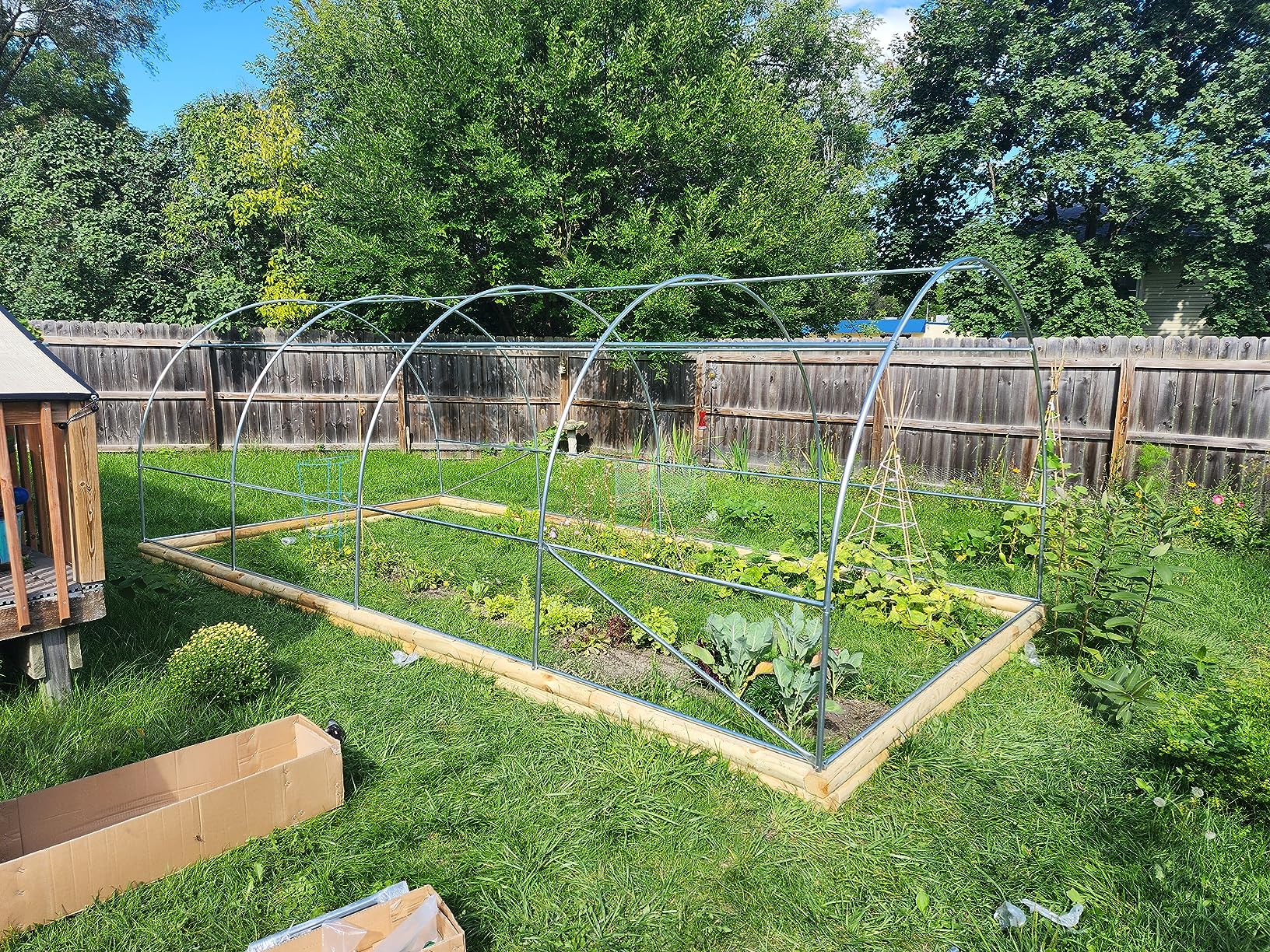For each perfect garden bed, there's a story of contorted passion and long, mournful sighs. In fact, many typical gardening mistakes for beginners can very quickly turn hope into hopelessness. This article highlights the most common gardening errors by novices and, importantly, provides concrete first-time gardener tips on how to avoid them. Getting over these traps will allow you to partake in the satisfying achievement of growing your own food and flowers.
Mistake #1: Ignoring Soil Quality
Soil quality may be neglected, and this will lead to stunted growth and chlorosis (yellowing leaves), nutrient deficiency (impaired flowering), and inundation of roots. A basic soil test can identify its pH and nutrient status. When the soil pH is high or low, it should be acidified or alkalized.
💡 Solution: One of the most important first-time gardener tips is to improve your soil with organic matter. Compost is every gardener's best friend, not only due to its ability to provide the right nutrition, provide drainage benefits, and retain moisture in the soil. Manure is also a powerful amendment; however, it is important to use well-rotted manure so as not to burn the plants. Adhere to organic gardening advice and do not use synthetic fertilizers, and in doing so, make an effort to build natural, healthy soil.
Mistake #2: Starting Too Big, Too Fast
Attractive as a large garden of homegrown food is, the reality for a novice gardener can often lead to disaster. Each of these consumes a lot of time, energy, and resources. Weeding, watering, fertilizing, and pest control can quickly get out of control due to burnout and neglect of plants. This is a prime example of gardening mistakes for beginners.
💡 Solution: Beginner gardening tips and tricks often emphasize starting small. Begin in a readily controllable environment, such as a bed or even a few boxes. This makes it possible to direct attention to a limited number of plants, to learn the special requirements of each plant, and to gain experience in gardening without being swamped by it. Being aware of your limits is one of the most beneficial tips for first-time vegetable gardeners.
Mistake #3: Poor Plant Selection
Tending a plant that is adapted to hot, arid environments in a wetland will be unsuccessful. Inappropriate plant selection can lead to suboptimal growth, higher disease susceptibility, and finally, plant death.
💡 Solution: How to avoid gardening mistakes begins with thorough research. Understand your local climate, i.e., your area's USDA plant hardiness zone. This will allow you to choose the plants according to the average minimum temperature of winter in your area. Take into account the amount of sun your garden gets and select the appropriate plants to utilize the sun at your disposal.
Mistake #4: Overwatering or Underwatering
Overwatering can suffocate roots and result in root rot and fungal infections. Due to underwatering, wilting, drying, and death occur in plants. How much to water and to water at all is probably one of the most important factors in successful gardening.
💡 Solution: Hydrate, deeply and sparsely, as compared with repeated. Supply water to the root zone using a soaker hose or drip irrigation, which reduces evaporation and the resulting likelihood of obtaining fungal disease. Following these gardening do’s and don’ts will prevent many root problems.
Mistake #5: Ignoring Sunlight Requirements
When a sun-loving plant is grown in shade, its yield will be poor, flowering will be weak, and overall the plant will be unhappy. In contrast, exposing a sun-tolerant plant to full sun can scorch its foliage and make it sag.
💡 Solution: Watching your garden across the day is a wonderful way of starting a garden for the first time and determining the amount of light each element in your garden receives. Identify which areas are in full sun, partial shade, or full shade. Choose plants that are suited to the available sunlight. A sun map should be generated for the location of the garden as this follows the best practices for new gardeners.
Mistake #6: Neglecting Weeding
Weeds are the bane of every gardener's existence because their action against your plant consumes water, nutrients, and light, and can also harbor pests and diseases. If weeds are left unchecked, the result can be a messy, overgrown garden bed and insufficient growth of plants.
💡 Solution: The lesson to stay clear of a weeding error, though, is the concept of consistency. Set up a reliable weed-timetable, even if it's only for a couple of minutes per day. Pull weeds by hand in wet soil, in which the whole root system can be effortlessly detached. Per organic gardening advice, natural weed control strategies (e.g., vinegar or hot water) can be utilized to eliminate weeds without harming your plants.
Mistake #7: Ignoring Pests and Diseases
Pests are capable of chewing plants, sucking stems, and transmitting disease. If these problems are not dealt with, one can suffer from plant damage, crop loss, and disease transmission to other plants.
💡 Solution: Conduct regular inspections for the existence of pests and diseases in your plants. Locate holes on leaves, spots, discoloration, or abnormal growths. For small infestations, use hand-picking or insecticidal soap. Organic pesticides and fungicides may be applied in cases of critical issues. Prevention is the answer; sticking to gardening do's and don'ts makes a world of difference.
Mistake #8: Improper Fertilization
For most family garden plants, over-fertilizing or under-fertilizing can both be detrimental. Over-fertilizing can burn plant roots and cause nutrient imbalances. Under-fertilizing can lead to stunted growth and nutrient deficiencies.
💡 Solution: Tips for first-time vegetable gardeners are never absent from the discussion of proper fertilization. Apply a balanced fertilizer with a ratio of nitrogen, phosphorus, and potassium (NPK) equal to each element. Slow-release fertilizers, which release the nutrients over time, are recommended to be applied. Follow organic gardening advice and attempt to lightly replace nutrients using compost tea or other natural amendments.
Mistake #9: Lack of Planning and Record Keeping
Errors in the design of the garden layout, in crop rotation, and in succession planting strategies may lead to inefficiencies and low yield.
💡 Solution: Apply the best practices for new gardeners to create a plan that will both visually represent the shape and layout of your garden and provide a planning structure for crop rotation. Recording planting dates and harvest yields, as well as any issues that arise, allows you to learn from such miscalculations and continuously refine your horticultural practices over time. First-time gardener tips commonly ignore this, but planning is critical.
Mistake #10: Not Asking for Help
Avoid shying away from seeking advice from experienced gardeners, community garden centers, or gardening forums. There is a great deal of information available, and most gardeners are eager to share their knowledge. No one expects a first-time gardener to know everything!
💡 Solution: Join a local gardening club or community garden. Attend workshops or seminars on gardening topics. Embrace the opportunity to learn from others and build a supportive gardening community. The surest way to prevent common gardening errors is to know these gardening mistakes in the first place.
Conclusion
Of course, gardening mistakes for beginners are easy to make but need not end tragically. Under the reminder of the above ten pitfalls, along with the suggested solutions, your opportunity for success is significantly improved. Remember, gardening is a journey, not a destination; following beginner gardening tips and tricks sets you up for success.









